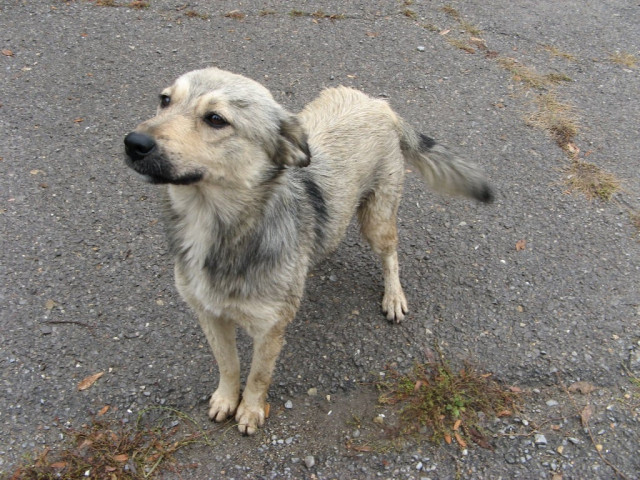All is not well: In K-P, animals ‘treated’ like humans
Faced with budget constraints, govt doctors and shopkeepers prescribe human medicines for animals.

Faced with budget constraints, govt doctors and shopkeepers prescribe human medicines for animals. PHOTO: FILE
A Kohati Gultair dog was tied to a pole outside Peshawar’s Government Veterinary Hospital at Chargano Chowk.
“He had a fierce fight four days ago,” his owner explained, while dusting off the mud from his chappals. The government was building a bridge overhead and all the debris, mud and construction material had accumulated in front of the hospital, making it difficult to access.

Syed Shah, a resident of Prang, Charsadda, was deeply concerned for his prized dog, as giving him desi ghee at home proved ineffective in improving his health and reducing the Gultair’s fever.
It’s 11am and Shah is one of 20 people that are waiting their turn to have their respective roosters, goats, cats, and cows checked with the vet on duty.
Anxious to give his dog the appropriate medicine for its condition, Shah will probably be prescribed drugs made for humans, such as Augmentin antibiotic.
Meanwhile, the vet supervisor, Saadullah, was scribbling prescriptions for various sick animals without thoroughly examining them, informing the concerned owners they could buy the medicine from the stores outside the hospital.
The veterinary facility’s budget did not allow for expensive animal medicines, especially since the hospital treated dozens of animals in a single day.
He prescribed aspirin for sick roosters, Augmentin antibiotic for dogs and cats, and Paracetamol for goats and sheep.
“Antibiotic is the best medicine for animals,” said Saadullah, who had no background in veterinary pharmacology.
These animals are like humans when it comes to medical treatment, he added with a smile on his face – not realising how bizarre that statement was. While talking to The Express Tribune, he explained that he examined around 25 animals every day, most of which suffered from minor illnesses like fever and worms.

Saadullah, who had no background in veterinary pharmacology, said that the ratio of sick animals in the region was much high but most people preferred to treat them at home with traditional medicines. Those who suffered from more severe illnesses such as high fever or wounds that required stitches would be brought to the vet, he said, while directing boys how to use a mixture of pyodine and spirit as an antiseptic for his goat’s leg.
Dr Alamzeb, Director of Khyber-Pakhtunkhwa (K-P) Livestock Department, who has run Government Veterinary Hospital Peshawar for 14 years, cited budget constraints as the reason for prescribing medicines manufactured for people.
“These animals have simple stomachs and can be treated as humans are,” he argued.
According to the senior government official, neither the animals’ owners nor the department could afford veterinary pharmaceutical products that were often too expensive.
“The budget, which is allocated to the department, is not enough for even one month,” he added.
Alamzeb said that livestock and poultry form the 17% K-P’s GDP but the health of this sector was not given enough attention.
“If we include the rural population living in villages, around 80% of people are associated with livestock in one or another way,” he said.
A senior official at the hospital requesting anonymity said that the entire province did not have a single veterinary pharmacologist, which was another reason why the facility relied on human medicines.
“Prescribing medicines is a pharmacologist’s duty. While Pakistan has only a few, the province has none,” he said.
According to the veterinary physician, there were some serious illnesses, like Rani Khaith in birds that could not be treated with human medicines and were far too expensive for the government to provide or for owner’s to acquire.
Aftab Khan runs a veterinary pharmacy that doubles as a medico shop for humans as well. Its dual function is not surprising since both animals and humans were prescribed the same medicines by vets as well as Khan himself. One shelf was reserved for veterinary pharmaceutical products for big animals such as cows. These were the expensive kind though.
Another veterinary shop owner, Muhammad Sijad, said that shopkeepers like himself sold medicines to both people and animals, based on their extensive experience as retailers of these pharmaceuticals. It was unclear what veterinary knowledge and research Sijad and Khan used during their extensive years prescribing various medicines, but they seemed to believe that whatever they were doing was working.
Sijad’s business was based on medicines sold to poultry farms which were abundant in the area where his shop was located.
He didn’t seem to find anything wrong with the fact that most people would skip going to the hospital and come straight to the shopkeepers to treat their animals.
“No one has a medical degree,” he said, adding that they all knew which medicine was needed for which animal. “It’s not a big deal.”
Published in The Express Tribune, March 29th, 2014.


















COMMENTS
Comments are moderated and generally will be posted if they are on-topic and not abusive.
For more information, please see our Comments FAQ